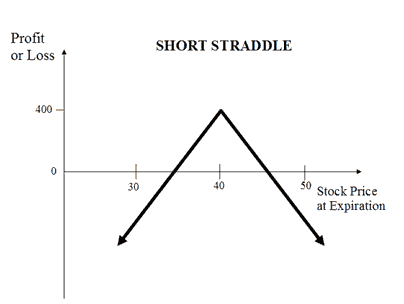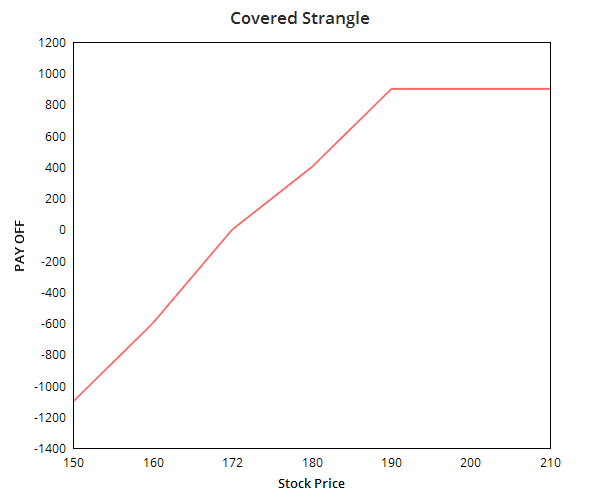 Zerodha (Trading & Demat Account)
Zerodha (Trading & Demat Account)
FREE Equity Delivery and MF
Flat ₹20/trade Intra-day/F&O
 Zerodha (Trading & Demat Account)
Zerodha (Trading & Demat Account)
FREE Equity Delivery and MF
Flat ₹20/trade Intra-day/F&O

|
|
Compare Short Straddle (Sell Straddle or Naked Straddle) and Covered Strangle options trading strategies. Find similarities and differences between Short Straddle (Sell Straddle or Naked Straddle) and Covered Strangle strategies. Find the best options trading strategy for your trading needs.
| Short Straddle (Sell Straddle or Naked Straddle) | Covered Strangle | |
|---|---|---|
 |
 |
|
| About Strategy | The Short Straddle (or Sell Straddle or naked Straddle) is a neutral options strategy. This strategy involves simultaneously selling a call and a put option of the same underlying asset, same strike price and same expire date. A Short Straddle strategy is used in case of little volatility market scenarios wherein you expect none or very little movement in the price of the underlying. Such scenarios arise when there is no major news expected until expire. This is a limited profit and unlimited loss strategy. The maximum profit earned when, on expire date, the underlying asset is trading at the strike price at which the options are sold. The maximum loss is unlimited and occurs when underlying asset price moves sharply in upward or down... Read More | The covered strangle option strategy is a bullish strategy. The strategy is created by owning or buying a stock and selling an OTM Call and OTM Put. It is called covered strangle because the upside risk of the strangle is covered or minimized. The strategy is perfect to use when you are prepared to sell the holding or bought shares at a higher price if the market moves up but would also is ready to buy more shares if the market moves downwards. The profit and in this strategy is unlimited while the risk is only on the downside. |
| Market View | Neutral | Bullish |
| Strategy Level | Advance | Advance |
| Options Type | Call + Put | Call + Put + Underlying |
| Number of Positions | 2 | 3 |
| Risk Profile | Unlimited | Limited |
| Reward Profile | Limited | Limited |
| Breakeven Point | 2 Breakeven Points | two break-even points |
| Short Straddle (Sell Straddle or Naked Straddle) | Covered Strangle | |
|---|---|---|
| When to use? | This strategy is to be used when you expect a flat market in the coming days with very less movement in the prices of underlying asset. |
A covered strangle strategy can be used when you are bullish on the market but also want to cover any downside risk. You are prepared to sell the shares on profit but are also willing to buy more shares in case the prices fall. |
| Market View | Neutral When trader don't expect much movement in its price in near future. |
Bullish The Strategy is perfect to apply when you're bullish on the market and expecting less volatility in the market. |
| Action |
|
Buy 100 shares + Sell OTM Call +Sell OTM Put The covered strangle options strategy can be executed by buying 100 shares of a stock while simultaneously selling an OTM Put and Call of the same the stock and similar expiration date. |
| Breakeven Point | 2 Breakeven Points There are 2 break even points in this strategy. The upper break even is hit when the underlying price is equal to the total of strike price of short call and net premium paid. The lower break even is hit when the underlying price is equal to the difference between strike price of short Put and net premium paid. Break-even points: Lower Breakeven = Strike Price of Put - Net Premium Upper breakeven = Strike Price of Call+ Net Premium |
two break-even points There are 2 break-even points in the covered strangle strategy. One is the Upper break even point which is the sum of strike price of the Call option and premium received while the other is the lower break-even point which is the difference strike price of short Put and premium received. |
| Short Straddle (Sell Straddle or Naked Straddle) | Covered Strangle | |
|---|---|---|
| Risks | Unlimited There is a possibility of unlimited loss in the short straddle strategy. The loss occurs when the price of the underlying significantly moves upwards and downwards. Loss = Price of Underlying - Strike Price of Short Call - Net Premium Received Or Loss= Strike Price of Short Put - Price of Underlying - Net Premium Received |
Limited The risk on this strategy is only on the downside when the price moves below the strike price of the Put option. |
| Rewards | Limited Maximum profit is limited to the net premium received. The profit is achieved when the price of the underlying is equal to either strike price of short Call or Put. |
Limited The maximum profit on this strategy happens when the stock price is above the call price on expiry. The profit is the total of the gain from buying/selling stocks and net premium received on selling options. |
| Maximum Profit Scenario | Both Option not exercised | You will earn the maximum profit when the price of the stock is above the Call option strike price on expiry. You will be assigned on the Call option, would be able to sell holding shares on profit while retaining the premiums received while selling the options. |
| Maximum Loss Scenario | One Option exercised |
The maximum loss would be when the stock price falls drastically and turns worthless. The premiums received while selling the options will compensate for some of the loss. |
| Short Straddle (Sell Straddle or Naked Straddle) | Covered Strangle | |
|---|---|---|
| Advantages | It allows you to benefit from double time decay and earn profit in a less volatile scenario. |
|
| Disadvantage | Unlimited losses if the price of the underlying move significantly in either direction. |
|
| Simillar Strategies | Short Strangle, Long Straddle | Long Strangle, Short Strangle |

Add a public comment...

FREE Intraday Trading (Eq, F&O)
Flat ₹20 Per Trade in F&O
|
|